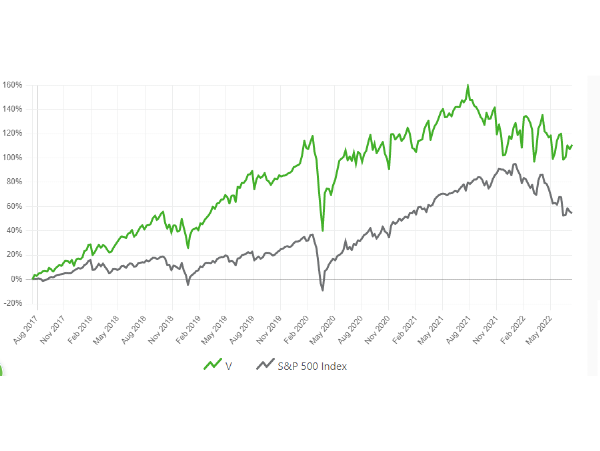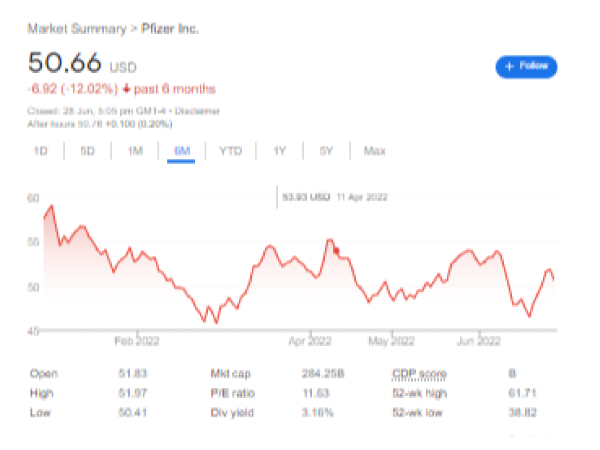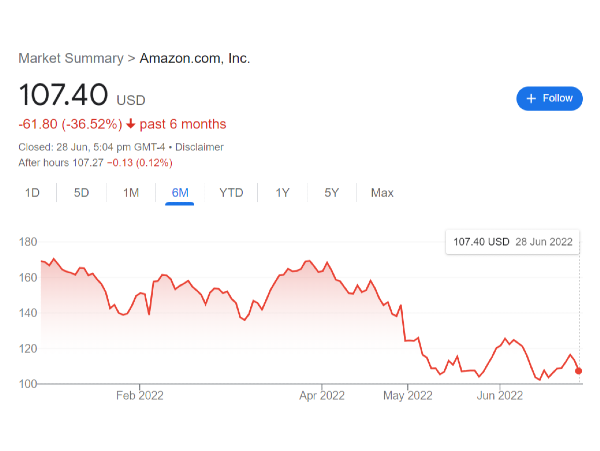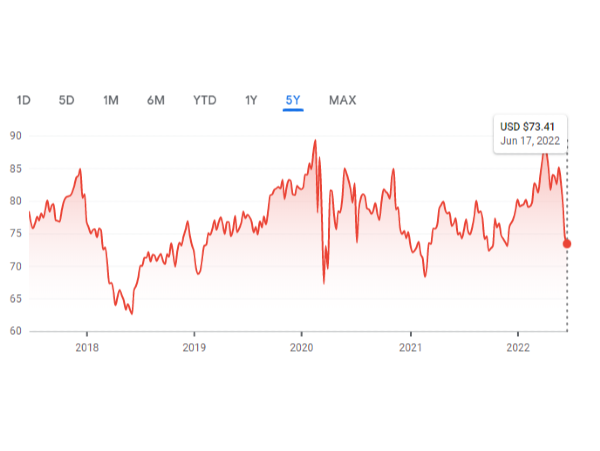Overview
After a frenzied week, the markets appear to be going into the weekend more subdued. China and Hong Kong equities paced the losers in the Asia Pacific region. Tokyo was mixed, but South Korea and Taiwan posted modest gains. The Hang Seng was off 6.75% this week. Europe's Stoxx 600 is up around 0.8% near midday to trim this week's loss to about 1.65%. US futures are posting small gains. The 10-year Treasury yield is off a couple basis points to around 2.94% and down five on the week. European benchmark yields are mostly 2-5 bp lower, but political concerns are still weighing on Italy, where the 10-year BTP yield has edged slightly higher. Against the major currencies, the dollar is softer, with the Australian dollar being the laggard with a small loss. Most of the G10 currencies are off more than 1% this week. Emerging market currencies are mixed. Asian units are mostly lower while central European currencies are mostly firmer. On the week, only the Peruvian sol and Russian rouble have managed to gain on the greenback. Gold traded below $1700 yesterday for the first time since last August and remains pinned there today. It is the fifth consecutive weekly loss. August WTI is little changed, holding below. It had spiked to almost $90 yesterday but has held above $94.50 today. US natgas is little changed on the session, up almost 9.5% for the week. Europe’s benchmark is off about 2.3% today after yesterday’s 3.6% decline, which leaves it up around 0.5% on the week. Iron ore fell almost 4% today to bring the dramatic week’s loss to 14.5%. September copper is 1.4% lower today, which brings its weekly loss to about 10.4%. It is the sixth consecutive weekly fall. September wheat was off more than 10% this week coming into today’s session. It is trading about 1% better but has struggled maintaining upticks and has fallen for the past four sessions.
Asia Pacific
China’s Q2 GDP was weaker than expected but the June data shows a recovery is underway, though the property market is still distressed. The world's second-biggest economy contracted by 2.6% quarter-over-quarter, compared with expectations of a 2% decline in output after the 1.3% expansion in Q1. The net result is that the economy expanded only 0.4% year-over-year. The June data were solid, however, as the re-opening after the lockdowns and government stimulus lent support. Industrial output rose 3.9% year-over-year after a 0.7% increase in May. Autos, solar-power batteries, telecoms rose sharply. Retail sales rose 3.1% year-over-year after a 6.7% drop in May. Auto sales were notable in rising 13.9% year-over-year after a 5.9% contraction in May. Surveyed joblessness fell to 5.5% from 5.9%. Fixed asset investment increased 6.1% year-to-date on year-over-year, basis slightly slower than the 6.2% pace in May. Manufacturing investments rose 10.4% and infrastructure rose 7.1%. However, property investment fell 5.4% year-over-year after a 4.0% decline in May. Home sales are off almost 29% year-over-year.
Recall that China's lockdowns appeared to be behind the staggering 7.5% decline in Japanese industrial production in the month of May. Today Japan reported that its tertiary sector (services) was a little stronger than expected, rising by 0.8% in May (vs. 0.5% median forecast in Bloomberg's survey). Separately, Prime Minister Kishida has not wasted any time after last weekend's election. He called for re-starting as many as nine nuclear reactors by the winter, which could provide around 10% of the country's power needs. Imported energy (natural gas and coal) is responsible for a significant part of the rise in imports and hence the deterioration of Japan's external balance. Getting more nuclear power on-line would likely help ease the terms-of-trade shock. Lastly, the BOJ meets next week, and while policy is unlikely to change, the central bank may shave its growth forecast and lift its inflation projections.
The dollar held below yesterday's high against the Japanese yen (~JPY139.40). It found support slightly ahead of JPY138.50. A break of that could see a push closer to JPY138. The greenback has risen almost 2% this week (at around JPY138.80), which is the biggest weekly gain since late Q1. It is the sixth weekly advance in the past seven. Three-month implied volatility reached 14% a month ago and today it is near 12.2%. The Australian dollar is consolidating after falling to almost $0.6680 yesterday, a new two-year low. It was capped just above $0.6760, which was the (50%) retracement of the gain since the March 2020 low (near $0.5500). Around $0.6735, it is off about 1.75% this week, its second decline in three weeks. Although stronger commodity prices did not appear to have helped it much, weaker commodity prices, including copper, gold, and oil are being cited by some for the Aussie's weakness. The greenback was confined to yesterday's range against the Chinese yuan (~CNY6.7235-CNY6.7685). Counting today, it has risen in four of this week's five sessions, and the nearly 1% gain is the most in two months. Month-to-date, the yuan has fallen by about 0.9%, making it one of the strongest performers against the dollar. The PBOC set the dollar's reference rate at CNY6.7503 compared with the median projection of CNY6.7496 in Bloomberg's survey.
Europe
European politics is dramatic, and around the time the Tories in the UK pick their next leader and prime minister, the US midterm elections will begin heating up. Sunak got 101 votes yesterday's round to lead the pack and drawing near the 120 votes needs to guarantee being one of the finalists. The final two candidates will be decided in a series of votes next week where candidate with the least votes is eliminated and will be known on July 21. There will be formal debate later today and the next round of voting will take place on Monday. Polls suggest that Mordaunt, who came in second place with 83 votes, would win if she were in the final two. It would not be surprising for distinct reasons if Sunak and third-place finisher Truss (64 votes) see Mordaunt as their biggest rival in their campaigns and debates. Braverman who was eliminated yesterday endorsed Truss who came in third.
High drama was seen in Rome too. After the biggest party in parliament withdrew from the government and abstained in the vote of confidence vote on aid, Prime Minister Draghi formally submitted his resignation to the president. As was most likely from the get-go, President Mattarella, who appointed Draghi in the first place, rejected the resignation and told him to try to put a new government together. It seemed a bit of a political stunt by the Five Star Movement. The next elections will be held for a smaller parliament and the Five Star Movement is projected to lose seats. In addition, the full rules, including thresholds for representation, electoral districts, and majority premium are not known yet. Draghi will address parliament next week and seek to lead a new government with a vote of confidence. The 10-year BTP yield had spiked to 30 bp higher at the worst, and as it became clearer to more observers the macabre theater, the yield pulled back and settled almost 10 bp higher. It is flat today, while the other benchmark yields are lower. Italy's 10-year premium over Germany widened to about 213 bp a roughly 20 basis point increase on the week after nine last week. The premium peaked a month ago around 240 bp and helped push the ECB toward a new policy tool (Transmission Protection Mechanism) that is expected to be unveiled next week when the ECB announces a rate hike.
The euro fell to almost $0.9950 yesterday as the Italian developments pushed on the open door. However, the buying of the euro on below parity continued yesterday and it recovered to almost $1.0050. Today, the euro is holding above $1.00 but unable to rise above $1.0050. If it does, it could spur some short covering that could lift it toward $1.0120. Near $1.0035, the euro is off 1.4% this week, which if it settled here, would be the third weekly decline of more than 1.3%. It has risen in only one week since the end of May. Sterling is in less than a quarter of a cent range around $1.1825 after having fallen to about $1.1760 yesterday, a two-year low. Near $1.1830, sterling is off about 1.7% this week, its biggest decline since early May. It is the third consecutive weekly decline, and like the euro, has only risen one week since the end of May.
America
Following the rise in June CPI, the Atlanta Fed's Bostic said that everything was on the table. In the context of the Bank of Canada's 100 bp move, the Fed's reaction to the May jump in CPI, the Fed funds market moved to price in about a 60% chance of a 100 bp move from the Fed. Two of the leading hawks at the Fed, Waller, and Bullard, seemed to endorse a 75 bp hike instead. Of course, the usual caveats apply, and Waller was explicit that the data between now and the Fed meeting will be decisive, and he pointed retail sales and housing figures. If they are "markedly stronger than expected", Waller could see a larger move (100 bp). Bullard said that the question has mostly been framed as 50 bp or 75 bp. A 75 bp hike would bring the Fed funds target to 2.50%, with three meetings left in the year. The median dot in June had the target rate 3.25%-3.50%. How long will the Fed tighten? Waller said he would favor tighter policy until the core PCE deflator showed signs of significant moderation. The June report is not out until July 29. In May, it stood at 4.7%, having fallen for the third month from a 5.3% peak.
Waller knew June retail sales will be reported today. Retail sales fell 0.3% in May, which was mostly a function of the drop in auto sales. Excluding autos, retail sales rose by 0.5%. However, when autos, gasoline, building materials, and food services excluded, the core measure was flat. A better report is expected in June. The median forecast in Bloomberg's survey is for a 0.9% headline rise and 0.7% excluding autos. The core measure is projected to rise by 0.3%. Waller's bar "is markedly stronger than expected."
There are three other data points to note. First, import and export price indices do not typically draw much attention, but they are a good reminder that the dollar's exchange rate is one of the channels Powell has cited through which the tightening of financial condition impact the demand. There is sometimes confusion over what a strong dollar policy is, and Yellen has not repeated it often as some of her predecessors have, though she gave no quarter to ideas that Japanese intervention may be appropriate. The strong dollar policy is consistent with Fed policy.
Second, the US reports June industrial output figures. A small gain is expected, but for those who think that pressures arise from something else than money supply, capacity use has surpassed the last cyclical high reaching 80.8% in May. It has not been this high since 2008, when it peaked at 81%. In earlier cycles (early 1989, late 1994, and late 1989) the usage rate peaked near 85%. While production is rising inventories are accumulating and this will influence GDP forecast and the Atlanta Fed's GDPNow tracker will be updated today. Third, the University of Michigan's consumer survey. We thought that the recessionary reading of consumer sentiment was key, but the Fed seemed to put stock in the preliminary 5-10-year inflation expectation, where most of the gain was revised away in the final iteration. The median forecast in Bloomberg' survey sees it slipping in June to 3.0% from 3.1% (which had been initially reported as 3.3%).
The US dollar spiked to almost CAD1.3225 in yesterday frantic move before settling closer to CAD1.3120. The general risk appetite still seems to outweigh the underlying fundamentals. Despite the unexpected 100 bp hike this week the Canadian dollar is off more than 1%. It is the third consecutive weekly drop for the Loonie. Canada reports international securities transactions, wholesale trade, and existing home sales. We note foreign portfolio inflows have been relatively strong, but home sales are softening and are expected to have fallen for the fourth consecutive month. The US dollar is holding below CAD1.3150 today, where a $750 mln option will expire. However, the greenback is trading below the CAD1.3100-level where $1.1 bln in options will also expire today. Meanwhile, the US dollar also traded above MXN21.00 for the first time in four months yesterday. The gains were pared, and the dollar settled near MXN20.80. It is consolidating in a narrow range so far today (~MXN20.78-MXN20.89). The greenback is rising for the third week in a row against the peso and five of the past six weeks. Support today is seen near MXN20.75, and the upper Bollinger Band about MXN20.99.




























Overview
After a frenzied week, the markets appear to be going into the weekend more subdued. China and Hong Kong equities paced the losers in the Asia Pacific region. Tokyo was mixed, but South Korea and Taiwan posted modest gains. The Hang Seng was off 6.75% this week. Europe's Stoxx 600 is up around 0.8% near midday to trim this week's loss to about 1.65%. US futures are posting small gains. The 10-year Treasury yield is off a couple basis points to around 2.94% and down five on the week. European benchmark yields are mostly 2-5 bp lower, but political concerns are still weighing on Italy, where the 10-year BTP yield has edged slightly higher. Against the major currencies, the dollar is softer, with the Australian dollar being the laggard with a small loss. Most of the G10 currencies are off more than 1% this week. Emerging market currencies are mixed. Asian units are mostly lower while central European currencies are mostly firmer. On the week, only the Peruvian sol and Russian rouble have managed to gain on the greenback. Gold traded below $1700 yesterday for the first time since last August and remains pinned there today. It is the fifth consecutive weekly loss. August WTI is little changed, holding below. It had spiked to almost $90 yesterday but has held above $94.50 today. US natgas is little changed on the session, up almost 9.5% for the week. Europe’s benchmark is off about 2.3% today after yesterday’s 3.6% decline, which leaves it up around 0.5% on the week. Iron ore fell almost 4% today to bring the dramatic week’s loss to 14.5%. September copper is 1.4% lower today, which brings its weekly loss to about 10.4%. It is the sixth consecutive weekly fall. September wheat was off more than 10% this week coming into today’s session. It is trading about 1% better but has struggled maintaining upticks and has fallen for the past four sessions.
Asia Pacific
China’s Q2 GDP was weaker than expected but the June data shows a recovery is underway, though the property market is still distressed. The world's second-biggest economy contracted by 2.6% quarter-over-quarter, compared with expectations of a 2% decline in output after the 1.3% expansion in Q1. The net result is that the economy expanded only 0.4% year-over-year. The June data were solid, however, as the re-opening after the lockdowns and government stimulus lent support. Industrial output rose 3.9% year-over-year after a 0.7% increase in May. Autos, solar-power batteries, telecoms rose sharply. Retail sales rose 3.1% year-over-year after a 6.7% drop in May. Auto sales were notable in rising 13.9% year-over-year after a 5.9% contraction in May. Surveyed joblessness fell to 5.5% from 5.9%. Fixed asset investment increased 6.1% year-to-date on year-over-year, basis slightly slower than the 6.2% pace in May. Manufacturing investments rose 10.4% and infrastructure rose 7.1%. However, property investment fell 5.4% year-over-year after a 4.0% decline in May. Home sales are off almost 29% year-over-year.
Recall that China's lockdowns appeared to be behind the staggering 7.5% decline in Japanese industrial production in the month of May. Today Japan reported that its tertiary sector (services) was a little stronger than expected, rising by 0.8% in May (vs. 0.5% median forecast in Bloomberg's survey). Separately, Prime Minister Kishida has not wasted any time after last weekend's election. He called for re-starting as many as nine nuclear reactors by the winter, which could provide around 10% of the country's power needs. Imported energy (natural gas and coal) is responsible for a significant part of the rise in imports and hence the deterioration of Japan's external balance. Getting more nuclear power on-line would likely help ease the terms-of-trade shock. Lastly, the BOJ meets next week, and while policy is unlikely to change, the central bank may shave its growth forecast and lift its inflation projections.
The dollar held below yesterday's high against the Japanese yen (~JPY139.40). It found support slightly ahead of JPY138.50. A break of that could see a push closer to JPY138. The greenback has risen almost 2% this week (at around JPY138.80), which is the biggest weekly gain since late Q1. It is the sixth weekly advance in the past seven. Three-month implied volatility reached 14% a month ago and today it is near 12.2%. The Australian dollar is consolidating after falling to almost $0.6680 yesterday, a new two-year low. It was capped just above $0.6760, which was the (50%) retracement of the gain since the March 2020 low (near $0.5500). Around $0.6735, it is off about 1.75% this week, its second decline in three weeks. Although stronger commodity prices did not appear to have helped it much, weaker commodity prices, including copper, gold, and oil are being cited by some for the Aussie's weakness. The greenback was confined to yesterday's range against the Chinese yuan (~CNY6.7235-CNY6.7685). Counting today, it has risen in four of this week's five sessions, and the nearly 1% gain is the most in two months. Month-to-date, the yuan has fallen by about 0.9%, making it one of the strongest performers against the dollar. The PBOC set the dollar's reference rate at CNY6.7503 compared with the median projection of CNY6.7496 in Bloomberg's survey.
Europe
European politics is dramatic, and around the time the Tories in the UK pick their next leader and prime minister, the US midterm elections will begin heating up. Sunak got 101 votes yesterday's round to lead the pack and drawing near the 120 votes needs to guarantee being one of the finalists. The final two candidates will be decided in a series of votes next week where candidate with the least votes is eliminated and will be known on July 21. There will be formal debate later today and the next round of voting will take place on Monday. Polls suggest that Mordaunt, who came in second place with 83 votes, would win if she were in the final two. It would not be surprising for distinct reasons if Sunak and third-place finisher Truss (64 votes) see Mordaunt as their biggest rival in their campaigns and debates. Braverman who was eliminated yesterday endorsed Truss who came in third.
High drama was seen in Rome too. After the biggest party in parliament withdrew from the government and abstained in the vote of confidence vote on aid, Prime Minister Draghi formally submitted his resignation to the president. As was most likely from the get-go, President Mattarella, who appointed Draghi in the first place, rejected the resignation and told him to try to put a new government together. It seemed a bit of a political stunt by the Five Star Movement. The next elections will be held for a smaller parliament and the Five Star Movement is projected to lose seats. In addition, the full rules, including thresholds for representation, electoral districts, and majority premium are not known yet. Draghi will address parliament next week and seek to lead a new government with a vote of confidence. The 10-year BTP yield had spiked to 30 bp higher at the worst, and as it became clearer to more observers the macabre theater, the yield pulled back and settled almost 10 bp higher. It is flat today, while the other benchmark yields are lower. Italy's 10-year premium over Germany widened to about 213 bp a roughly 20 basis point increase on the week after nine last week. The premium peaked a month ago around 240 bp and helped push the ECB toward a new policy tool (Transmission Protection Mechanism) that is expected to be unveiled next week when the ECB announces a rate hike.
The euro fell to almost $0.9950 yesterday as the Italian developments pushed on the open door. However, the buying of the euro on below parity continued yesterday and it recovered to almost $1.0050. Today, the euro is holding above $1.00 but unable to rise above $1.0050. If it does, it could spur some short covering that could lift it toward $1.0120. Near $1.0035, the euro is off 1.4% this week, which if it settled here, would be the third weekly decline of more than 1.3%. It has risen in only one week since the end of May. Sterling is in less than a quarter of a cent range around $1.1825 after having fallen to about $1.1760 yesterday, a two-year low. Near $1.1830, sterling is off about 1.7% this week, its biggest decline since early May. It is the third consecutive weekly decline, and like the euro, has only risen one week since the end of May.
America
Following the rise in June CPI, the Atlanta Fed's Bostic said that everything was on the table. In the context of the Bank of Canada's 100 bp move, the Fed's reaction to the May jump in CPI, the Fed funds market moved to price in about a 60% chance of a 100 bp move from the Fed. Two of the leading hawks at the Fed, Waller, and Bullard, seemed to endorse a 75 bp hike instead. Of course, the usual caveats apply, and Waller was explicit that the data between now and the Fed meeting will be decisive, and he pointed retail sales and housing figures. If they are "markedly stronger than expected", Waller could see a larger move (100 bp). Bullard said that the question has mostly been framed as 50 bp or 75 bp. A 75 bp hike would bring the Fed funds target to 2.50%, with three meetings left in the year. The median dot in June had the target rate 3.25%-3.50%. How long will the Fed tighten? Waller said he would favor tighter policy until the core PCE deflator showed signs of significant moderation. The June report is not out until July 29. In May, it stood at 4.7%, having fallen for the third month from a 5.3% peak.
Waller knew June retail sales will be reported today. Retail sales fell 0.3% in May, which was mostly a function of the drop in auto sales. Excluding autos, retail sales rose by 0.5%. However, when autos, gasoline, building materials, and food services excluded, the core measure was flat. A better report is expected in June. The median forecast in Bloomberg's survey is for a 0.9% headline rise and 0.7% excluding autos. The core measure is projected to rise by 0.3%. Waller's bar "is markedly stronger than expected."
There are three other data points to note. First, import and export price indices do not typically draw much attention, but they are a good reminder that the dollar's exchange rate is one of the channels Powell has cited through which the tightening of financial condition impact the demand. There is sometimes confusion over what a strong dollar policy is, and Yellen has not repeated it often as some of her predecessors have, though she gave no quarter to ideas that Japanese intervention may be appropriate. The strong dollar policy is consistent with Fed policy.
Second, the US reports June industrial output figures. A small gain is expected, but for those who think that pressures arise from something else than money supply, capacity use has surpassed the last cyclical high reaching 80.8% in May. It has not been this high since 2008, when it peaked at 81%. In earlier cycles (early 1989, late 1994, and late 1989) the usage rate peaked near 85%. While production is rising inventories are accumulating and this will influence GDP forecast and the Atlanta Fed's GDPNow tracker will be updated today. Third, the University of Michigan's consumer survey. We thought that the recessionary reading of consumer sentiment was key, but the Fed seemed to put stock in the preliminary 5-10-year inflation expectation, where most of the gain was revised away in the final iteration. The median forecast in Bloomberg' survey sees it slipping in June to 3.0% from 3.1% (which had been initially reported as 3.3%).
The US dollar spiked to almost CAD1.3225 in yesterday frantic move before settling closer to CAD1.3120. The general risk appetite still seems to outweigh the underlying fundamentals. Despite the unexpected 100 bp hike this week the Canadian dollar is off more than 1%. It is the third consecutive weekly drop for the Loonie. Canada reports international securities transactions, wholesale trade, and existing home sales. We note foreign portfolio inflows have been relatively strong, but home sales are softening and are expected to have fallen for the fourth consecutive month. The US dollar is holding below CAD1.3150 today, where a $750 mln option will expire. However, the greenback is trading below the CAD1.3100-level where $1.1 bln in options will also expire today. Meanwhile, the US dollar also traded above MXN21.00 for the first time in four months yesterday. The gains were pared, and the dollar settled near MXN20.80. It is consolidating in a narrow range so far today (~MXN20.78-MXN20.89). The greenback is rising for the third week in a row against the peso and five of the past six weeks. Support today is seen near MXN20.75, and the upper Bollinger Band about MXN20.99.
Originally posted on marctomarket.com